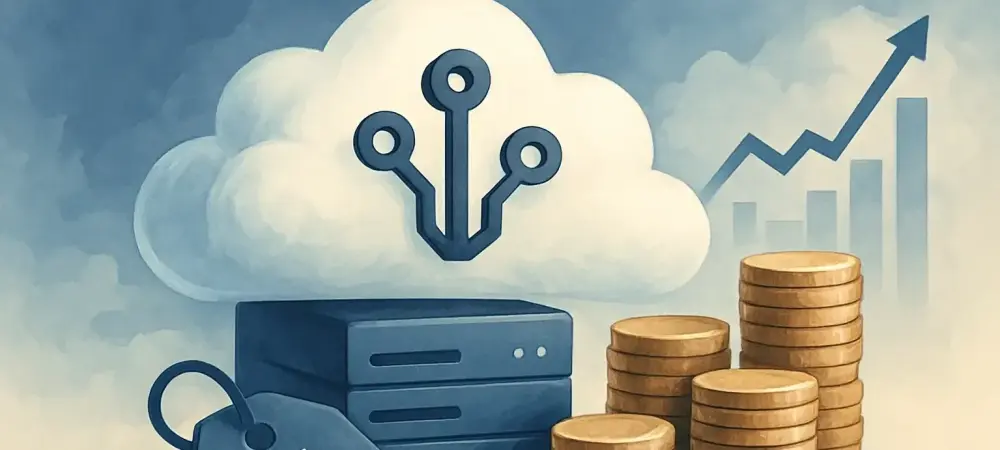I’m thrilled to sit down with Dominic Jainy, a seasoned IT professional whose expertise in artificial intelligence, machine learning, and blockchain has positioned him as a thought leader in the tech industry. With a keen eye on how emerging technologies shape business strategies, Dominic offers invaluable insights into the evolving landscape of tech pricing models, especially as vendors grapple with the rising costs of cloud computing driven by AI demands. In this conversation, we dive into the challenges of balancing innovation with profitability, the shift toward usage-based pricing, and the future of monetization strategies in the tech sector.
What’s behind the current wave of tech vendors rethinking their pricing structures?
The primary driver is the skyrocketing cost of delivering AI products and services. Vendors are seeing their cloud spend soar as they try to meet the computational demands of AI workloads, especially generative and agentic models. This isn’t just a minor bump—it’s a fundamental shift. The infrastructure needed to support AI is incredibly resource-intensive, and traditional pricing models aren’t cutting it anymore when it comes to covering these expenses while maintaining healthy profit margins.
How significant are rising cloud costs in pushing for these pricing changes?
They’re huge. Cloud costs are often cited as the single biggest barrier to increasing annual recurring revenue for tech providers. With public cloud spend projected to quadruple over the next few years due to AI demands, vendors are under immense pressure. It’s not just about paying for more server space; it’s the energy, cooling, and specialized hardware like GPUs that add up. If they don’t adapt their pricing, they risk getting squeezed out of profitability.
Can you break down how the high costs of AI delivery are impacting vendor profits?
Absolutely. About 70% of tech executives have reported that deploying AI products is eating into their bottom line. The issue is that training and running AI models, especially complex ones, requires massive computational power, which translates to hefty cloud bills. Meanwhile, many vendors are still using pricing models that don’t account for these spikes in usage, so they’re absorbing costs they can’t pass on to customers without risking churn. It’s a tightrope walk between staying competitive and staying solvent.
What specific hurdles are vendors facing when it comes to managing AI deployment costs?
One major hurdle is the unpredictability of costs. AI workloads can vary wildly based on user demand, making budgeting a nightmare. There’s also the challenge of scaling infrastructure to handle peak loads without over-provisioning, which wastes money. Plus, not all AI features are equal—some, like real-time processing or large-scale language models, are far more expensive to deploy than others, and vendors often struggle to price them accurately.
Why do you think usage-based pricing is becoming such a popular strategy among vendors?
Usage-based pricing is gaining traction because it directly ties revenue to consumption. With AI and cloud services, costs are often proportional to how much a customer uses, so it makes sense to charge based on that usage. It’s a way for vendors to align their pricing with their own expenses, ensuring they’re not left footing the bill for heavy users. It also offers transparency to customers, who only pay for what they need, which can build trust.
What are some examples of new pricing strategies vendors are exploring to tackle rising cloud spend?
Many are looking at hybrid models that combine elements of subscriptions with usage-based fees. For instance, a base subscription might cover standard access, with additional charges for high-intensity AI features or peak usage periods. Others are experimenting with tiered pricing based on compute resources consumed. These approaches differ from the flat-rate or per-user subscriptions of the past by offering more flexibility and reflecting the actual cost of service delivery.
How are vendors balancing the need to push AI innovation while keeping costs in check?
It’s a delicate balance. Many are investing in purpose-built infrastructure to optimize for AI workloads, which can lower long-term costs even if it’s expensive upfront. They’re also getting smarter about data—using analytics to predict usage patterns and avoid over-spending on cloud resources. At the same time, they’re under pressure to keep innovating, so they’re focusing on high-value AI features that justify premium pricing to customers, ensuring the investment pays off.
Why do you think subscription models are losing ground as a primary way to monetize AI products?
Subscriptions, especially per-user ones, often fail to capture the true cost of AI usage. If you’ve got a handful of users hammering high-cost AI features, the flat subscription fee doesn’t cover the vendor’s expenses. It’s also tough to scale revenue with subscriptions when usage fluctuates so much. As AI becomes more integral, vendors are realizing they need models that reflect actual consumption to stay profitable, which is why usage-based pricing is expected to grow.
What do you see as the long-term benefits of shifting toward usage-based revenue for tech providers?
Over the long haul, usage-based models can create a more sustainable business. They allow vendors to scale revenue alongside costs, which is critical with AI’s unpredictable demands. It also fosters a closer alignment with customer value—if a client sees a direct link between what they pay and what they use, they’re more likely to perceive the service as fair. Plus, it encourages efficiency on both sides, as customers might optimize their usage to save money, indirectly reducing vendor costs.
What’s your forecast for the future of pricing models in the tech industry, especially with AI driving so much change?
I think we’re heading toward a hybrid future where usage-based pricing dominates but doesn’t entirely replace subscriptions. Vendors will likely offer a mix—core services under a predictable subscription, with premium or high-usage AI features billed by consumption. As cloud spend continues to climb, I expect more innovation in pricing, with AI-driven analytics helping vendors fine-tune their models. The key will be striking a balance that maximizes revenue while delivering clear value to customers, ensuring both sides feel they’re getting a fair deal.

